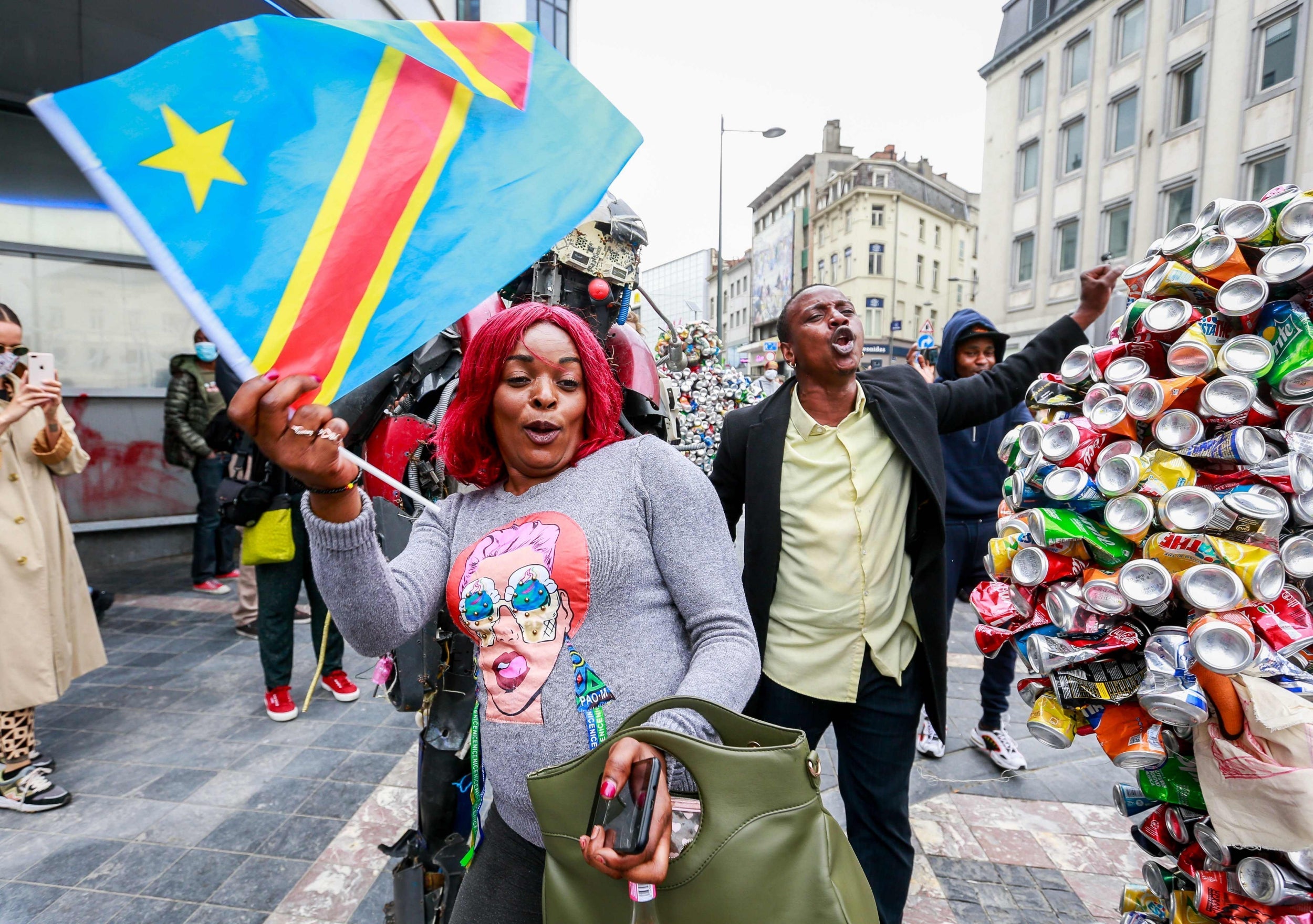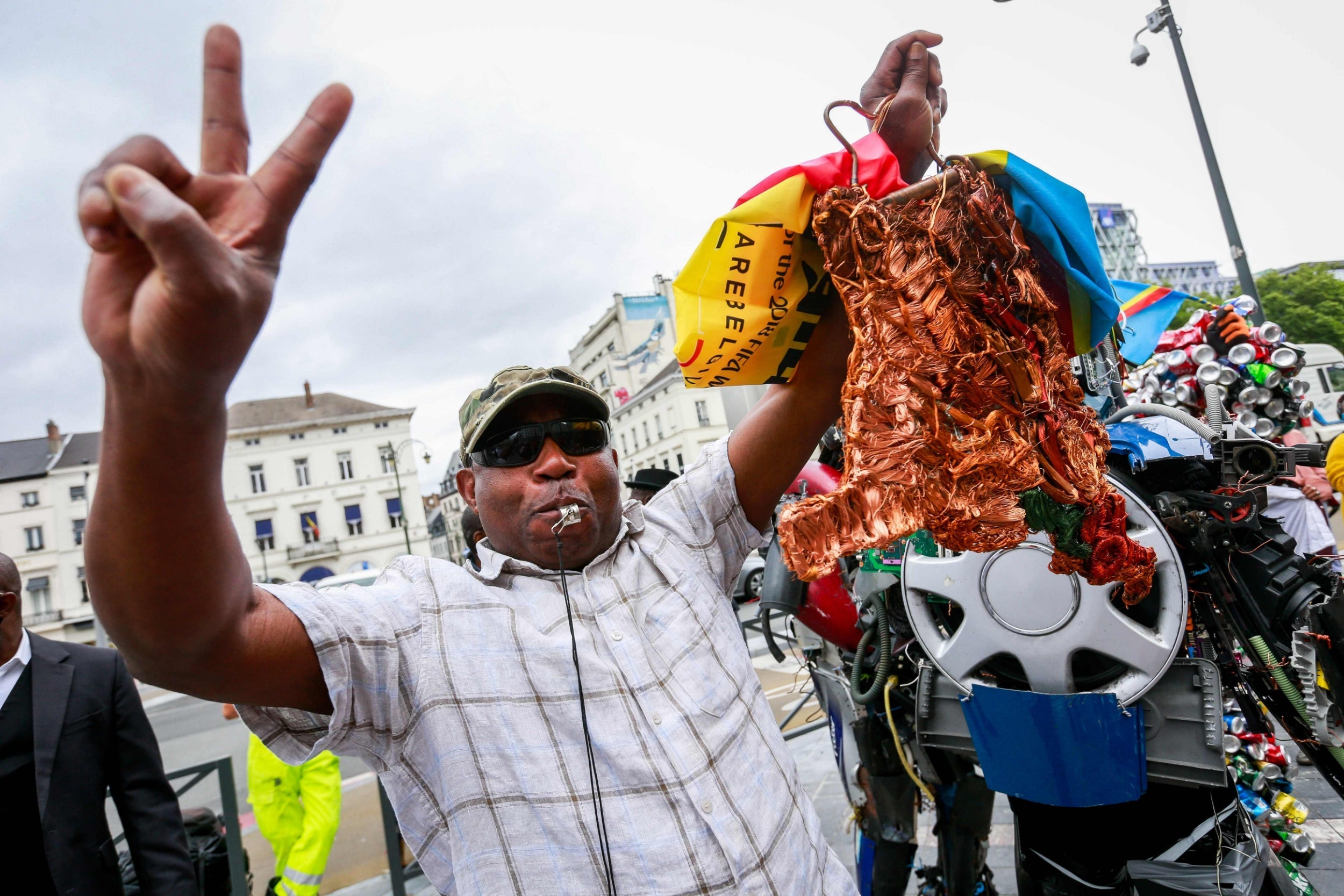‘Nothing short of genocide’: DR Congo marks 60 years since independence – but has Belgium atoned for its bloody legacy?
Belgium is facing a long-overdue reckoning of its dark past in Congo with its problems with systemic racism and ignorance over its colonial past now under fresh scrutiny, Leo Cendrowicz reports

At the side gates of Belgium’s Royal Palace in Brussels stands a giant statue of King Leopold II astride a horse. The monarch, who reigned from 1865 until 1909, is said to have never liked horses, but that equestrian anomaly is far from the statue’s main contention. It is rather the dark chapter of Belgian history that he represents; Leopold seized Congo, enslaved its people, pillaged its resources, and left a death toll in the millions. The former colony, now known as the Democratic Republic of Congo (DRC), celebrates 60 years of independence on Tuesday. However, it is only recently that Belgians have begun atoning for what they did there.
King Philippe today took a step towards acknowledging the sins of his ancestor when he issued a statement expressing his “deepest regret” for the wounds of the colonial past, and the “acts of violence and cruelty committed” in Congo under Belgian occupation. Writing to the DRC’s president Felix Tshisekedi, the king added, “We must be able to talk to each other about our long common history in all truth and serenity.”
Belgian prime minister Sophie Wilmes went further, announcing that the parliament’s forthcoming truth and reconciliation commission would examine “without taboos” the country’s colonial history. “The time has come for Belgium to take a journey towards the truth,” she said.
Leopold’s legacy resurfaced in recent weeks as the Black Lives Matters protesters demanded that Belgium remove monuments to the colonial era and rename the many streets and squares that bear Leopold’s name. The statue at the palace, regularly daubed with graffiti, is seen as particularly offensive as it is just a stone’s throw from Matonge, the Brussels neighbourhood that is now the heart of the Congolese diaspora.
Mireille Tsheusi-Robert, a Congolese-born Brussels-based activist says the statues are an affront to Belgium’s Congolese community. “What Leopold did was nothing short of genocide,” she says. “Would the Germans have a statue of Hitler?” Ms Tsheusi-Robert, founder of Bamko, an anti-racism group, says she still receives threatening letters for speaking out. “The Congolese were seen as animals – as monkeys – and we still feel the effects of this today.”
Freddy Mutombo, a Kinshasa-born artist says Belgium has turned a blind eye to its colonial atrocities for decades. “We feel pain when we see the statues of Leopold, but it is nothing compared to the pain of knowing that most Belgians do not understand the truth about their country, and what it did to Congo,” he says. Mr Mutombo, whose colonial-inspired artworks are currently being exhibited in Brussels, says the entire Belgian establishment needs to change. “There needs to be a proper teaching of history in Belgian schools – that is still not happening,” he says.
Leopold II, a cousin of Queen Victoria, was uniquely monstrous, even by the standards of 19th-century imperialism. He hired Welsh explorer Henry Morton Stanley to hoodwink tribal leaders into signing away their land. Then, at the Berlin Conference of 1884-85, held to carve up Africa, he persuaded the great European powers to let him create the so-called Congo Free State. He promised to “civilise” the territory – 76 times the size of Belgium – by converting it to Christianity, stamping out the Arab slave trade and ending cannibalism.
Congo was not a national colony. It was Leopold’s personal estate, designed to funnel the ivory and rubber wealth to the king’s coffers. There was no civilising mission: Leopold’s private army enforced control through murder and mutilation. They punished locals who failed to meet their rubber quotas by amputating their hands – or those of their children (Leopold would later claim there was an outbreak of “hand cancer,” and these were surgical procedures). The crazed character of Kurtz in Joseph Conrad’s Heart of Darkness was likely inspired by Leon Rom, who decorated his garden with severed Congolese heads. In his excoriating 1999 book King Leopold’s Ghost, historian Adam Hochschild estimates that 10 million Congolese, roughly half the population, perished in the 40 years after 1885.
The horrors in Congo became more widely known at the turn of the century, notably thanks to reporting by British journalist Edmund Dene Morel. European neighbours intervened and the Belgian state took over the colony in 1908. In 1960, Congo finally became independent.

But today, the DRC is one of Africa’s most dysfunctional countries. Belgium colluded with the CIA in the 1961 murder of their radical, first prime minister Patrice Lumumba. Later, the country nearly broke apart as regions turned on each other. In 1965, it fell under the sway of notorious dictator Mobutu Sese Seko, who renamed the country Zaire. He was overthrown in 1997 by another dictator, Laurent Kabila, who renamed the country DRC and triggered a devastating war with neighbours. Kabila’s son Joseph only relinquished the presidency last year but is still thought to pull the power strings. The result is that DRC today is one of the poorest countries in the world, with most Congolese deprived of health care, schooling and drinkable water. On Tuesday, the United Nations said that violence in the DRC has displaced more than one million people in just 6 months.
As for Belgians, they soon forgot the atrocities and set about mythologising their colonial exploits. Until recently, schoolchildren learnt how Leopold put Belgium on the map when he “civilised” Congo. They were taught how Belgians built roads, schools and hospitals and introduced Christianity. Earlier this month, Prince Laurent – King Philippe’s brother – tried to absolve Leopold by saying he could not be held responsible, as he never set foot in the Congo.
Now, however, politicians from across the political spectrum are saying it is time to acknowledge the truth about Leopold, notably by changing the history curriculum, and by removing colonial memorials. In 2018, the Royal Museum of Central Africa, originally built by Leopold to house his collection of pillaged Congo treasures, reopened after a five-year, £70m makeover that removed references glorifying the colonial period.
But Belgium still has a long way to go. Stephanie Collingwoode Williams, a founder of the Belgian Network for Black Lives (BNFBL), said a clear line could be drawn between the colonial propaganda and the residual racism. “Even today, we see politicians dressing up in blackface,” she says. “Many Belgians still treat people of colour like savages who need to be civilised. Belgium only left Congo 60 years ago, but we can still feel the effects.”
Join our commenting forum
Join thought-provoking conversations, follow other Independent readers and see their replies
Comments